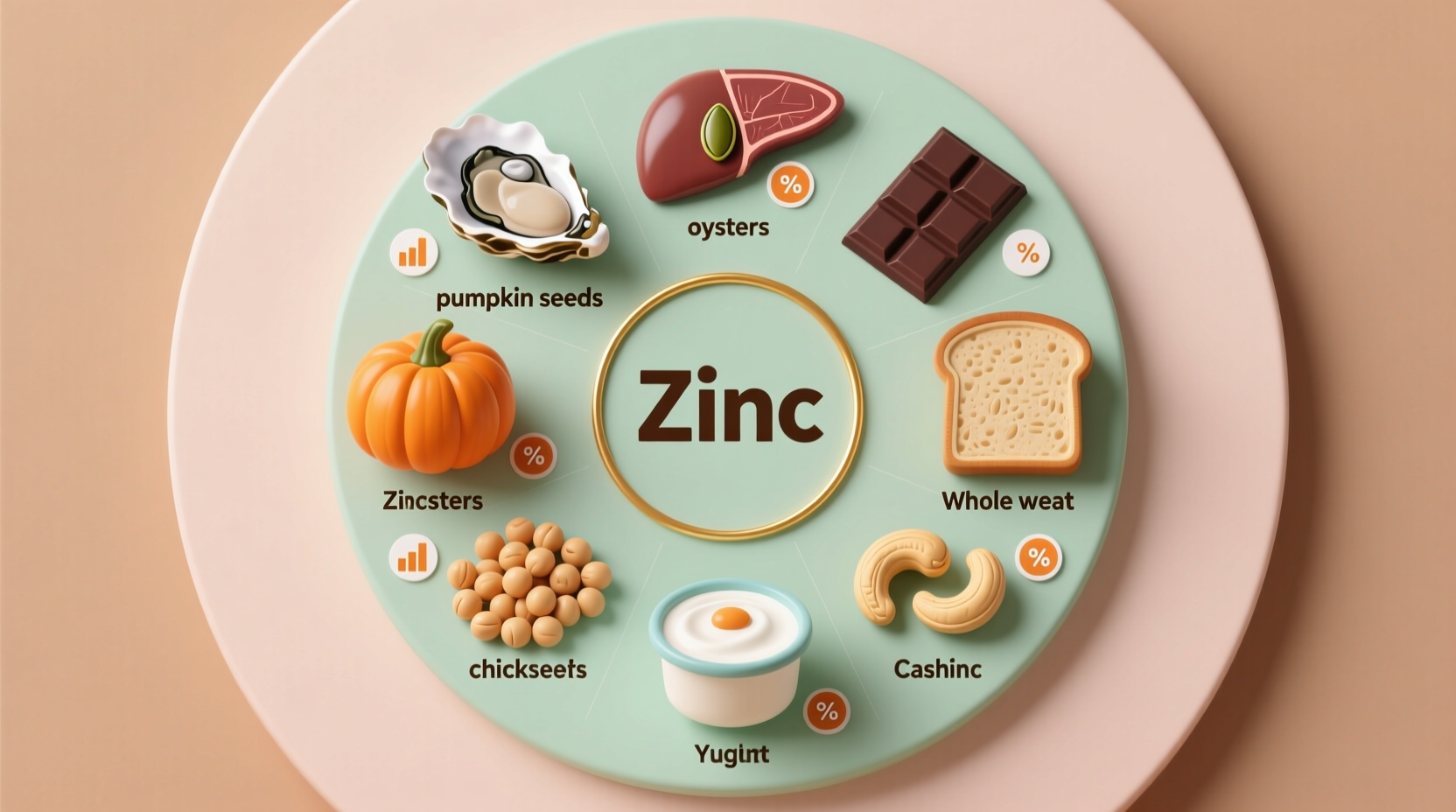Why Zinc Matters for Your Health
Zinc plays a critical role in over 300 enzymatic reactions in your body. This essential mineral supports immune function, DNA synthesis, protein production, and wound healing. Unlike some nutrients, your body doesn't store zinc, making regular dietary intake crucial. The National Institutes of Health recommends:
- Men: 11 mg daily
- Women: 8 mg daily
- Pregnant women: 11 mg daily
- Lactating women: 12 mg daily
Deficiency can cause weakened immunity, hair loss, and delayed wound healing. Athletes and older adults often need more zinc due to increased metabolic demands and reduced absorption efficiency.
Top Animal-Based Zinc Sources
Animal proteins provide zinc in a highly bioavailable form called "free zinc," which your body absorbs more efficiently than plant-based sources. Here's what the USDA FoodData Central database reveals about top animal sources:
| Food (3 oz serving) | Zinc Content | % Daily Value |
|---|---|---|
| Oysters (cooked) | 74 mg | 673% |
| Beef chuck roast | 7 mg | 64% |
| Alaskan king crab | 6.5 mg | 59% |
| Pork chop | 2.9 mg | 26% |
| Dark chicken meat | 2.4 mg | 22% |
Oysters stand out as nature's most concentrated zinc source, delivering more than six times the daily requirement in a single serving. Red meats like beef provide substantial amounts along with iron and B vitamins, creating a powerful nutritional package.

Plant-Based Zinc Powerhouses
For vegetarians and vegans, several plant foods offer valuable zinc, though absorption rates are lower due to phytates. The Academy of Nutrition and Dietetics recommends soaking, sprouting, or fermenting plant foods to enhance zinc bioavailability:
| Food | Zinc Content | % Daily Value |
|---|---|---|
| Fortified breakfast cereal (1 serving) | 3.8 mg | 35% |
| Baked beans (½ cup) | 2.9 mg | 26% |
| Pumpkin seeds (1 oz) | 2.2 mg | 20% |
| Yogurt (1 cup) | 1.7 mg | 15% |
| Cashews (1 oz) | 1.6 mg | 15% |
Legumes like chickpeas and lentils provide moderate zinc levels along with fiber and plant protein. Whole grains contain zinc but also phytates that can inhibit absorption by up to 50%. Pairing plant-based zinc sources with vitamin C-rich foods like citrus fruits or bell peppers can improve absorption rates significantly.
Maximizing Zinc Absorption
Your body absorbs only 20-40% of dietary zinc due to various inhibitors. Understanding these factors can help you optimize intake:
- Absorption enhancers: Animal protein, citric acid, and certain amino acids
- Absorption inhibitors: Phytates (in grains/legumes), calcium supplements, and high-fiber meals
- Strategic pairing: Combine zinc-rich foods with vitamin C sources (e.g., beans with tomatoes)
Research published in the American Journal of Clinical Nutrition shows that soaking beans for 12 hours can reduce phytate content by 50%, dramatically improving zinc availability. Similarly, sourdough fermentation of whole grains breaks down phytates, making the zinc more accessible.
Dietary Considerations for Special Needs
Certain populations require tailored approaches to zinc intake:
- Vegans and vegetarians: Need up to 50% more zinc due to lower bioavailability (14 mg for men, 10 mg for women)
- Older adults: Reduced stomach acid impairs zinc absorption; consider smaller, more frequent servings
- Athletes: Sweat losses increase requirements by 10-20%; prioritize post-workout zinc-rich snacks
The World Health Organization notes that zinc deficiency affects approximately one-third of the global population, with higher prevalence in regions relying heavily on plant-based diets. This highlights the importance of strategic food choices for optimal zinc status.
Practical Zinc-Rich Meal Ideas
Implementing zinc-rich foods into your daily routine doesn't require drastic changes. Try these simple strategies:
- Breakfast: Fortified cereal with pumpkin seeds and sliced strawberries (vitamin C boost)
- Lunch: Lentil soup with lemon juice and whole grain bread
- Dinner: Grass-fed beef stir-fry with broccoli and cashews
- Snacks: Greek yogurt with cashews or roasted chickpeas
For those following Mediterranean eating patterns, a weekly serving of oysters paired with regular consumption of legumes, nuts, and dairy provides excellent zinc coverage. The key is consistency—small daily amounts beat occasional large servings due to your body's limited storage capacity.
When Supplements May Be Necessary
While food sources should be your primary zinc source, supplements might help in specific situations:
- Confirmed deficiency through blood testing
- Certain digestive disorders (Crohn's, celiac disease)
- Long-term vegetarians showing deficiency symptoms
The NIH warns that excessive zinc supplementation (over 40 mg daily) can cause copper deficiency and immune impairment. Always consult a healthcare provider before starting supplements, especially if you take medications like antibiotics or diuretics that interact with zinc.











 浙公网安备
33010002000092号
浙公网安备
33010002000092号 浙B2-20120091-4
浙B2-20120091-4